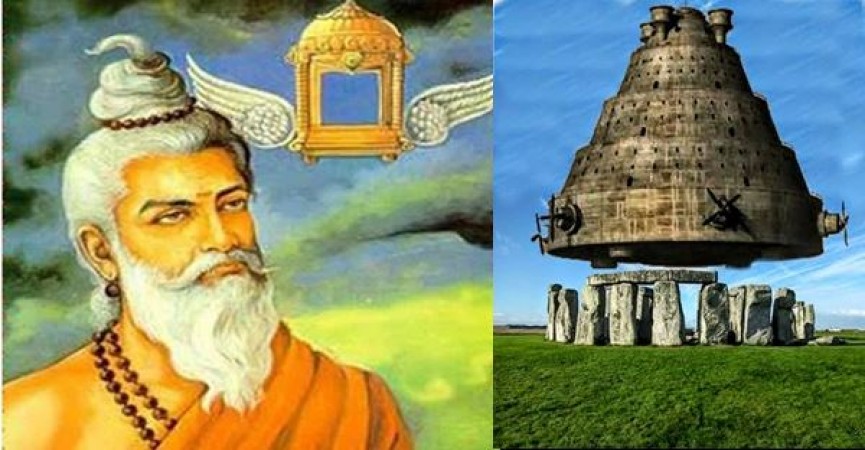
Bhardwaj Muni's Vimana Shastra, a timeless ancient Indian text, holds fascinating insights into aircraft engineering that continue to intrigue scholars and scientists today. Written in an era long before the advent of modern aviation, this treatise delves into concepts that align with contemporary principles of aircraft design, propulsion, and navigation. In this article, we explore the historical context of the Vimana Shastra, its potential contributions to modern aircraft engineering, and highlight scientific references that underline the remarkable depth of ancient Indian knowledge.
Origins and Historical Context:
The Vimana Shastra, attributed to the sage Bhardwaj Muni, is believed to have been written in ancient India, possibly thousands of years ago. While the exact date remains a subject of debate, its existence predates the technological advancements of modern aviation by centuries. The text's significance lies in its exploration of aeronautical concepts that demonstrate the astute understanding of flight possessed by ancient Indian scholars.
Aerodynamic Concepts Ahead of Their Time:
Bhardwaj Muni's Vimana Shastra reveals an impressive understanding of aerodynamic principles, centuries before the birth of modern aircraft engineering. Descriptions within the text highlight the importance of streamlined designs, elongated wings, and efficient shapes, indicating an appreciation for reducing drag and optimizing lift. These concepts parallel contemporary aerodynamic principles and lay the foundation for modern aircraft design.
Materials and Propulsion Systems:
The Vimana Shastra touches upon the utilization of advanced materials and propulsion systems. It describes the integration of lightweight yet sturdy materials, including metals, alloys, and composites, reflecting a recognition of their impact on aircraft performance. Furthermore, the text introduces unconventional propulsion mechanisms such as mercury-based power sources and ion propulsion. While these concepts may not align with modern practices, they inspire innovative thinking and push the boundaries of traditional propulsion systems.
Navigational Techniques and Celestial Wisdom:
Intriguingly, Bhardwaj Muni's work encompasses navigational methods rooted in celestial observations and astronomical instruments. The Vimana Shastra refers to the use of star charts and precise celestial measurements for navigation purposes. This aligns with modern avionics systems that rely on GPS, inertial navigation, and celestial references for accurate positioning and guidance. The inclusion of these navigational techniques reflects a profound understanding of celestial mechanics and their application in aircraft navigation.
Scientific Validation of Ancient Knowledge:
While ancient texts like the Vimana Shastra may appear mythological or allegorical, scientific research has revealed underlying principles that resonate with modern engineering. For instance, recent studies have explored the aerodynamic efficiency of ancient Indian designs, confirming their effectiveness. Additionally, materials science and propulsion research continue to push the boundaries of conventional practices, drawing inspiration from unconventional ideas proposed in ancient texts.
Preserving and Celebrating Ancient Indian Knowledge:
Appreciating the wisdom encapsulated within the Vimana Shastra and similar ancient Indian texts is vital for fostering a holistic understanding of our shared scientific heritage. By preserving and studying these valuable resources, we can bridge the gap between ancient knowledge and modern advancements, inspiring future innovations in aircraft engineering and beyond.
Conclusion:
Bhardwaj Muni's Vimana Shastra offers a remarkable window into the brilliance of ancient Indian knowledge, presenting concepts that intersect with modern aircraft engineering. The text's exploration of aerodynamics, materials, propulsion, and navigation reveals a visionary understanding of flight. By recognizing and celebrating the scientific references within this ancient Indian text, we honor the enduring legacy of ancient scholars and unlock a realm of inspiration for the advancement of modern aircraft engineering.
PNB Opens 'Project PNB PALAASH' to Drive Environmental Sustainability